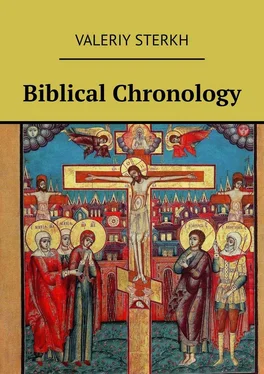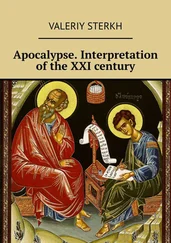In terms of chronology, the above letter, testifies only to the relatively wide spread of Christianity by the beginning of the second century.
Gaius Suetonius Tranquill (c. 70 – c. 126 NE), Roman writer, historian, encyclopedist, and personal secretary of Emperor Hadrian. In his work “The Lives of the Twelve Caesars” [De vita Caesarum], he records the deeds of the Emperor Claudius (reigned in 41 – 54 NE):
“He [Claudius] expelled from Rome the Jews who were constantly stirred by Chresto” (Ibid., 5,25,4).
Some skeptical scholars, who see here the name of Chrest, are not inclined to associate it with Jesus. On the other hand, there’s nothing here that prevents us from assuming that this is a distorted name of Christus or Χριστός. Moreover, this is exactly what Tertullian points out: “The designation ‘Christian’, as follows from the etymology of the word, derives from the word ‘anointment’. And the name Chrestian, incorrectly pronounced by you [Romans] (because you do not even know exactly what we are called), means ‘pleasantness’ or ‘goodness’” (Apologeticum, 3,5). Lactantius makes a similar remark: “However, it is necessary to explain the meaning of this name [Christ] because some ignorant people, who would call him Chrest, make a mistake by mixing up the two sounds” (Divine Institutes, 4,7,5). Also, the Book of Acts says that when Paul came to Corinth, he found there the exiled Jews, “because that Claudius had commanded all Jews to depart from Rome” (Act 18:2). But what else, other than the spreading of the teaching of Jesus Christ, could cause the Roman Jews to be “constantly stirred”?
The stubbornness of skeptics in this matter is not so arbitrary as it is pointless, because Suetonius speaks more precisely in another place of “The Lives of the Twelve Caesars”, Suetonius, speaking of the deeds of the Emperor Nero (reigned in 54 – 68 NE): « [Nero] punished Christians [Christiani], the adherents of a new and pernicious superstition” (Ibid., 6,16,2). The reasons behind this persecution were explained by Tacitus, as will be mentioned later.
Speaking of chronology, Suetonius testifies to the wide spread of Christianity in the middle of the first century.
Cornelius Tacitus (c. 55 – c. 120 NE), the Roman writer, historian, forensic orator, senator. In his “Annales” he writes:
“And Nero, wishing to overcome the rumors [about his orders to set Rome on fire], found the scapegoats and gave over to the most excruciating tortures those who through their abominations had incurred general hatred of the populace and whom the crowd called Christians. This Christ, from whom this name is derived, was executed by the procurator Pontius Pilate under Tiberius. For a time this malicious superstition was suppressed but then broke out again, and not only in Judea where this blight originated, but also in Rome, where every abomination and every shameful thing in the world is gathered and where it finds ready adepts. So, at first, those who openly recognized themselves as belonging to this sect were seized, and then, using the information they provided, a great number of others were denounced, not so much as villainous arsonists but as haters of the human race in general. Their executions were accompanied by humiliations and insults, for they were clothed in the skins of wild animals so as to be torn apart by dogs; they were crucified on crosses, and, being sentenced to death by burning, set on fire at nightfall for illumination. Nero provided his gardens for this show. He also organized a performance in the circus where he sat among the crowds, clothed as a charioteer, or rode in a chariot as a participant in a contest. And although those Christians were guilty and deserved the severest of punishments, all these cruelties aroused compassion for them, for it seemed that they were being exterminated not for the sake of the common good, but simply because of Nero’s bloodthirstiness” (Ibid., 15,44).
Tacitus specifically mentions the execution of Jesus Christ as taking place at the time of the emperor Tiberius in Rome and Pontius Pilate in Judea. But this does not give us any more information apart from what we already know from the Gospels.
Josephus Flavius (c. 37 – c. 100) was the Jewish commander, writer, historian who served at the Roman court. He writes in his work “Judean Antiquities”:
“Having learned of the death of [Porcius] Festus, the emperor sent [Lucceius] Albinus as his procurator in Judea. About the same time, the king [Agrippa] stripped Joseph [Cavius] of his high-priesthood and appointed Ananus, the son of Ananus, as his successor. The latter, Ananus the Senior, was a very happy man: he had five sons who all became high priests after him, and he himself had occupied this honorable position for a very long time. None of our high priests had such a happy lot in life. Anan the Junior, of whose appointment we just spoke, was a harsh and impetuous man. He belonged to the party of the Sadducees, which, as we have already mentioned, was known in courts for their immoderate cruelty. Being a ruthless man, Anus considered the death of Festus and Albinus’s temporary absence to be a perfect time to satisfy his cruelty. So, calling together the Sanhedrin, he had them interrogate James [Jacob], the brother of Jesus, called Christ, as well as several others. They were accused of violating the laws and sentenced to death by stoning” (Ibid., 20,9,1).
Porcius Festus was a Roman governor in Judea between the years 59—62 NE at the time of Agrippa II, the tetrarch. Agrippa reigned between 48 – 93 NE, and his reign is associated with the trial of the apostle Paul in Caesarea (see Act 25—26). Anan the Senior is mentioned in the Gospels as High Priest Annas, Joseph Caiaphas’s father-in-law (see Lk 3:2; Jn 18:13, 24). The high-priesthood of Anan the Senior falls on years 6—15 NE, and the high-priesthood of Caiaphas between 18—37 NE. The sons of Anan (Annas) also became High Priests: Eleazar was the high priest in the years 16—17 NE (Judean Antiquities, 18,2,2), Jonathan in 37 NE (Ibid., 18,4,3; 18,5,3; 19,6,4), Theophilus in the years 37—41 NE (Ibid., 18,5,3; 19,6,2). [Could he be that very “Honorable [most excellent] Theophilus” to whom Luke addressed two of his books and who subsequently converted to Christianity? See Lk 1:3; Act 1:1], Matthias in 43 NE (Ibid., 19,6,4; 19,8,1), Anan the Junior in 63 NE (Ibid., 20,9,1). So, according to Josephus, James [Jacob], the stepbrother of Jesus, was executed in 63 NE. James, the brother of Jesus, is mentioned in the New Testament (see Mt 13:55; Mk 6:3; Act 12:17; 15:13; 21:18; Gal 1:18—19; 2:9). Also, Eusebius of Caesarea quotes Hegesippus, the second-century Christian writer, who says that James [Jacob] was thrown down from the roof of the Jerusalem temple and then stoned to death (see Church History, 2,23).
Elsewhere, Josephus writes:
“There lived around this time a wise man, Jesus <, if such a designation can be applied to him>. He was performing amazing deeds and became the Mentor for those who readily accepted the truth. He attracted many Jews and Greeks to himself. Pilate sentences him to be crucified . Yet those who loved him continued to do so up to this day. There are still the so-called Christians who call themselves by this name” (Judean Antiquities, 18,3,3).
It is believed that this paragraph has been preserved almost intact; possible errors are marked by triangular brackets.
Let us compare this passage with the same passage from Josephus Flavius as quoted in the version of Agapius of Hierapolis (died 942 NE):
“At this time there lived a wise man, whose name was Jesus. He led a sinless life and and was known for his virtues. Many Jews and non-Jews became his disciples. Pilate condemned him to death through crucifixion, but those who were his disciples continued to spread his teaching. They said he appeared to them three days after his crucifixion and was alive. That is why, it is believed, that he was the Messiah whose wonderful deeds were foretold by the prophets” (World History [Book of the Titles], 2).
Читать дальше












